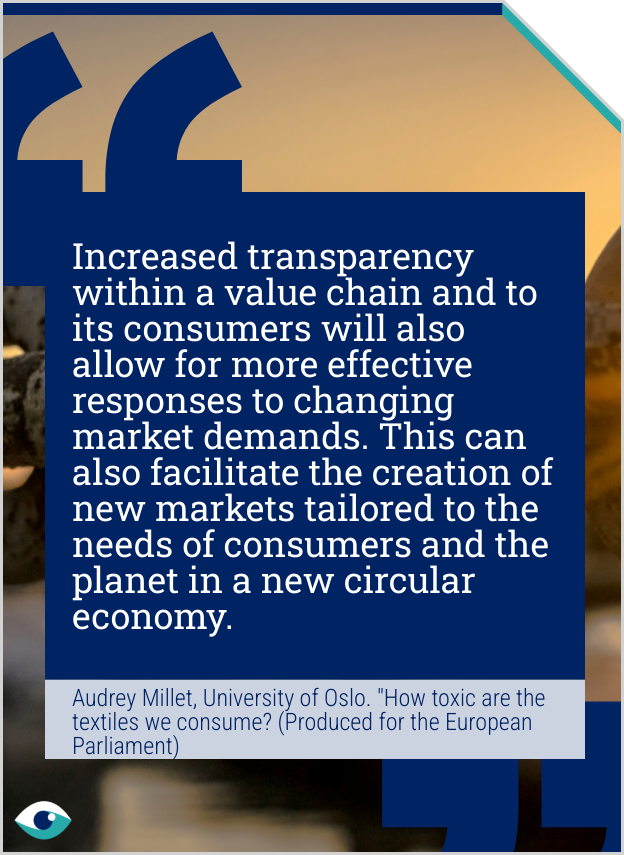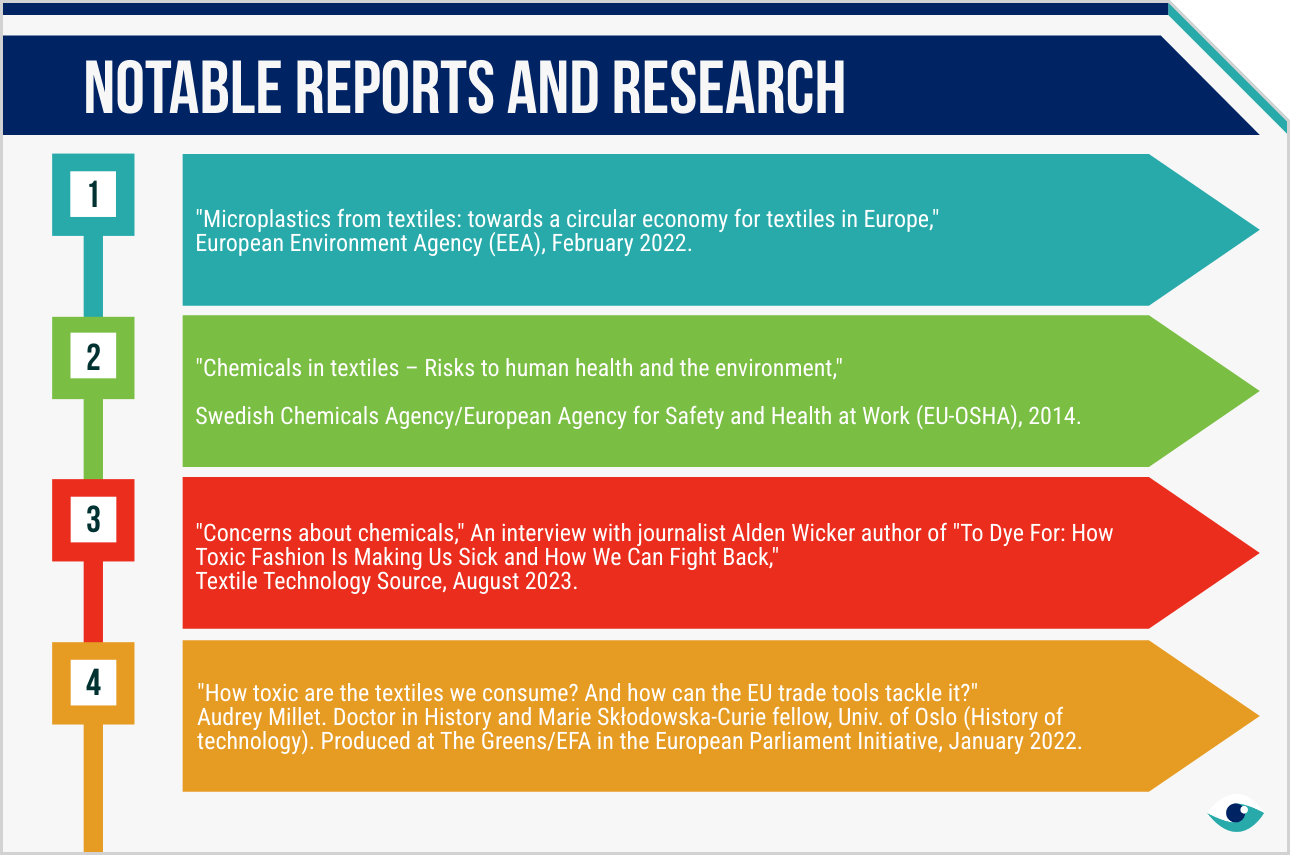Textiles are subject to concerns over the impacts of chemicals and plastics in materials and manufacturing, which harm workers, consumers and the environment. Up to 35% of microplastics in the environment and 33% of household dust are microplastics from textiles. Finished apparel still contains banned or regulated chemicals. Regulation is evolving with mandates like the Consumer Product Safety Improvement Act in the U.S. and the EU's Registration, Evaluation, Authorisation, and Restriction of Chemicals (REACH). Companies must also justify their social license to operate and improve chemical management systems, third-party audits and supplier governance.

Chemicals management in textiles critical to protect health
The fashion industry is under pressure to make critical changes in chemical use to protect workers and consumers
People: Social & Governance impacts
Fashion & personal care
AT A GLANCE
The textile sector is the third largest employer and a significant component of the global economy.
Over 8,000 synthetic chemicals are used in fashion manufacturing, including hormone disrupters like phthalates, carcinogens like PFCs and formaldehyde.
Companies must act to protect workers and consumers and mitigate reputational damage and the risk of litigation.

Frameworks and standards
This industry is reliant on global standards and compelled by growing regulations that increase transparency and accountability in product lifecycle management and dictate material and operational changes. Companies align reporting with SASB Management of Chemicals and GRI 416, comply with the new U.S. Act, REACH and work to voluntary standards from Zero Discharge of Hazardous Chemicals (ZDHC) or the ILO code of practice for safety and health in textiles, clothing, leather and footwear.
Enhancing transparency
Transparency in chemical usage and impact is critical to build trust with consumers and stakeholders and demonstrate accountability. It’s vital in supplier governance and to influence the global south, where regulation is emerging. Programs like the ZDHC Gateway leverage transparency to reduce harmful substances in value chains, ensuring inventories conform. Adidas, for example, is banning chemicals classified as hazardous under ZDHC and the REACH List of Substances of Very High Concern (SVHC).

Industry collaboration
Entities in the industry leverage collaborations such as the Green Chemistry and Commerce Council (GC3) to standardize safe chemical practices. Participation in initiatives like ZDHC helps companies align with global safety standards and reduce impacts. These collaborations enhance compliance and foster industry-wide adoption of best practices in chemical management. TJX is a member of GC3 and has partnered with outside experts to conduct a “landscape review” that included peer benchmarking.
Long-term evolution
Development and enforcement of international chemical safety standards necessitates continuous improvement in product design and manufacture. Proponents argue REACH and WHO regulations are incomplete and difficult to enforce. Impact studies and consumer awareness will drive further mandates, stringent compliance, and greater transparency. Improving chemical inclusion and management will become increasingly vital for business sustainability, competitiveness, and meeting stakeholder expectations.
FURTHER READING
- Are your clothes making you sick? The opaque world of chemicals in fashion (The Guardian)
- Impacty of bleaching chemicals on workers and environment (Clean Clothes Campaign)
- Understanding REACH (European Chemicals Agency - ECHA)
